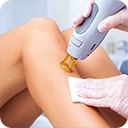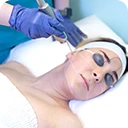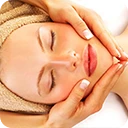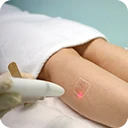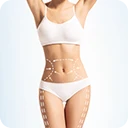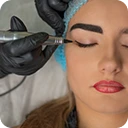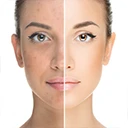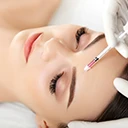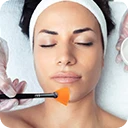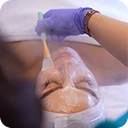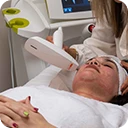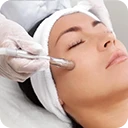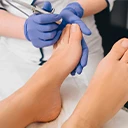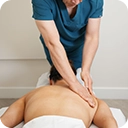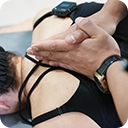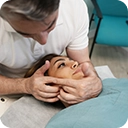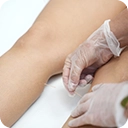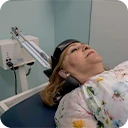Excessive sweating, or hyperhidrosis, is more than just a minor inconvenience—it’s a medical condition that can profoundly impact daily living. For those affected, the constant struggle with sweat-soaked clothing, damp palms, or persistent wetness under the arms can lead to significant emotional distress and self-consciousness. Simple tasks like shaking hands, using a touchscreen device, or choosing what to wear become daily challenges, often dictating social and professional choices.
The effects go beyond physical discomfort. Individuals with hyperhidrosis may avoid social gatherings, sports, or professional meetings, fearing visible sweat stains or the need for frequent trips to the restroom to freshen up. This persistent anxiety about appearance and odor can erode self-confidence, sometimes leading to isolation or even anxiety and depression.
Physical complications are also common. Constant moisture on the skin can cause irritation, chafing, and in some cases, fungal or bacterial infections. Certain fabrics and colors may be avoided, further limiting personal expression and comfort. Despite these impacts, many people delay seeking help, either out of embarrassment or misunderstanding about available treatments. Recognizing the real-life challenges of hyperhidrosis is the first step toward finding effective solutions and reclaiming quality of life.
What Causes Hyperhidrosis? Exploring the Underlying Condition
- Hyperhidrosis is caused by overactive nerves stimulating sweat glands.
- It is not always related to heat or physical exertion.
- The condition may be primary (no identifiable cause) or secondary (linked to another health issue).
- Genetics can play a role in predisposition.
- Understanding the causes helps guide treatment selection.
Hyperhidrosis is defined by sweating that exceeds what is necessary to regulate body temperature, often appearing without clear triggers such as heat or exercise. At the root of this condition is the overactivity of the nerves that communicate with the sweat glands. In people with hyperhidrosis, these nerves send signals to produce sweat even when it’s not needed, leading to persistent moisture in affected areas.
There are two primary categories of hyperhidrosis. Primary, or focal, hyperhidrosis usually starts during childhood or adolescence and often affects specific areas like the palms, soles, or underarms. While the exact cause isn’t always known, genetics appear to play a significant role, as the condition often runs in families. Secondary, or generalized, hyperhidrosis can develop later in life and is typically linked to another medical condition or medication. Examples include diabetes, thyroid disorders, menopause, or certain neurological diseases.
Understanding the type and underlying cause of hyperhidrosis is crucial for selecting the most effective treatment. A careful medical assessment can help differentiate between primary and secondary hyperhidrosis, ensuring that any underlying health issues are addressed and that the most appropriate and targeted interventions are offered.
How Botox® Treats Excessive Sweating: Mechanism and Benefits
- Botox® blocks nerve signals to sweat glands.
- It is FDA-approved for treating hyperhidrosis in specific areas.
- Treatment is localized, targeting only problem zones.
- Results in a significant reduction of sweat production.
- Provides a non-invasive, temporary solution with minimal downtime.
One of the most effective and widely recognized treatments for hyperhidrosis is Botox® (botulinum toxin type A). While commonly associated with cosmetic procedures, Botox® also has a powerful medical application in controlling excessive sweating. The treatment works by temporarily blocking the chemical signals from nerves that stimulate the sweat glands. When these signals are interrupted, the glands simply stop producing excessive amounts of sweat.
Botox® is particularly effective for localized areas such as the underarms, palms, soles of the feet, scalp, and other regions where excessive sweating is problematic. The treatment is FDA-approved for underarm hyperhidrosis and is frequently used off-label for other body zones with great success.
One of the main benefits of Botox® therapy is its precision. The injections are administered directly into the affected area, ensuring that only the overactive sweat glands are targeted. Most people experience a dramatic reduction in sweating, often within a few days of treatment, which can restore comfort and confidence. Additionally, the process is non-surgical, requires little to no downtime, and has a well-established safety profile when performed by trained professionals. For individuals seeking an effective and minimally invasive solution to excessive sweating, Botox® offers a promising option.
Common Treatment Areas and What to Expect During the Procedure
- Typical areas treated: underarms, palms, soles, scalp, forehead, groin.
- Botox® injections are performed in-office with minimal discomfort.
- Procedure lasts about 10-20 minutes.
- Numbing options (cream, ice) are available to enhance comfort.
- Little to no downtime is required post-procedure.
Botox® therapy for hyperhidrosis is tailored to address the specific areas where excessive sweating occurs. The most commonly treated regions include the underarms, palms of the hands, soles of the feet, scalp, forehead, and groin. Essentially, any localized area where sweat production is problematic can be considered for treatment.
The procedure itself is relatively straightforward and minimally invasive. After the treatment area is cleansed, a series of tiny Botox® injections are administered just beneath the skin. For most patients, the session takes between 10 to 20 minutes, depending on the size and number of areas being treated.
Comfort is a priority during the procedure. Numbing creams or ice packs can be applied beforehand to minimize any discomfort, and you may be advised to take an over-the-counter pain reliever such as acetaminophen about an hour before your appointment. The sensation is usually described as a light pinch or sting, with most patients rating discomfort as very low—typically a 1 to 3 out of 10 when treating the underarms.
Following the procedure, you can typically resume normal activities right away. There may be slight redness or swelling at the injection sites, but these effects are usually brief. The ease and efficiency of the process make Botox® an accessible treatment option for those seeking rapid and effective relief from excessive sweating.
Results, Longevity, and Potential Side Effects of Botox® Therapy
- Noticeable reduction in sweating occurs within days.
- Maximum effect is seen in 7-14 days.
- Results typically last 6-12 months.
- Mild, temporary side effects may include discomfort or bruising.
- Rare risks include temporary muscle weakness, especially with palm treatments.
One of the most appealing aspects of Botox® therapy for hyperhidrosis is the speed and longevity of its results. Many individuals begin to notice a significant reduction in sweating within just a few days of treatment. The full effects are typically realized between 7 and 14 days post-injection, with some reporting improvement as early as three days.
The benefits of a single session usually last from six to twelve months, although this can vary depending on the area treated and individual response. As the effects gradually diminish, repeat treatments are recommended to maintain optimal results and continued comfort.
Side effects from Botox® therapy are generally mild and temporary. Most commonly, patients may experience slight discomfort during the injections, minor bruising, or localized tenderness. When treating the palms, there is a small risk of temporary muscle weakness, but this is uncommon and typically resolves without intervention. Serious complications are rare, particularly when the procedure is performed by an experienced healthcare provider.
The majority of individuals find the trade-off between temporary, minor side effects and the substantial improvement in quality of life to be well worthwhile. A thorough consultation with a qualified practitioner can help ensure that the benefits outweigh any potential risks and that you are an ideal candidate for this therapy.
Evaluating Treatment Suitability and Understanding Costs
- Assessment includes a medical history review and physical examination.
- Not all patients are suitable—individual response varies.
- Costs may be partially or fully covered by private insurance.
- Assessment by a healthcare provider is often covered by public health plans.
- Detailed information on cost and coverage is provided during consultation.
Before starting Botox® therapy for hyperhidrosis, a comprehensive medical assessment is essential. This typically involves a review of your medical history and a thorough examination to ensure that Botox® is an appropriate and safe option for your specific needs. Certain conditions or medications may influence your suitability for treatment, so open communication with your healthcare provider is key.
Effectiveness can vary from person to person, and not everyone will respond to Botox® in the same way. Your practitioner will discuss expected outcomes, answer your questions, and help you set realistic expectations based on your unique situation.
When it comes to cost, coverage can depend on a variety of factors. The assessment appointment is often covered by public health insurance, while the medication itself may be fully or partially reimbursed through private drug plans. There is usually an additional fee for the injection procedure. For those without private insurance, many still choose to proceed due to the substantial quality-of-life improvements the treatment provides.
A reputable clinic will always provide clear, upfront information about pricing, potential coverage, and all aspects of safety and effectiveness during your consultation. This ensures you can make an informed decision and feel confident every step of the way.
Beyond Sweating: Additional Medical Uses of Botox®
- Botox® is used for medical conditions beyond hyperhidrosis.
- Applications include migraines, TMJ pain, and bruxism.
- It helps manage Raynaud disease and syndrome.
- Botox® is utilized for spasticity and bladder dysfunction in other specialties.
- Its versatility is supported by ongoing research and clinical experience.
While Botox® is best known for its ability to smooth wrinkles and control excessive sweating, its medical applications extend far beyond these uses. This versatile therapy is approved and widely utilized for a range of conditions, showcasing its potential to improve quality of life in multiple ways.
For example, Botox® has proven highly effective in managing chronic migraines and tension headaches. By relaxing muscles and blocking pain signals, it can significantly reduce the frequency and intensity of headache episodes for many sufferers. It is also used to relieve Temporomandibular Joint (TMJ) pain and bruxism (teeth grinding), conditions that can cause jaw discomfort, headaches, and dental issues.
In cases of Raynaud disease and syndrome, where blood flow to the extremities is compromised, Botox® can help by relaxing the muscles around blood vessels, improving circulation, and reducing symptoms. The therapy is also utilized in other specialties to treat spasticity (muscle stiffness or spasms), bladder dysfunction, and certain neurological conditions such as cerebral palsy.
Ongoing research continues to uncover new uses for Botox®, expanding its role in modern medicine. This wealth of clinical experience and evidence supports Botox® as a safe, adaptable tool for both cosmetic and therapeutic applications, offering hope and improved well-being to a wide range of patients.







